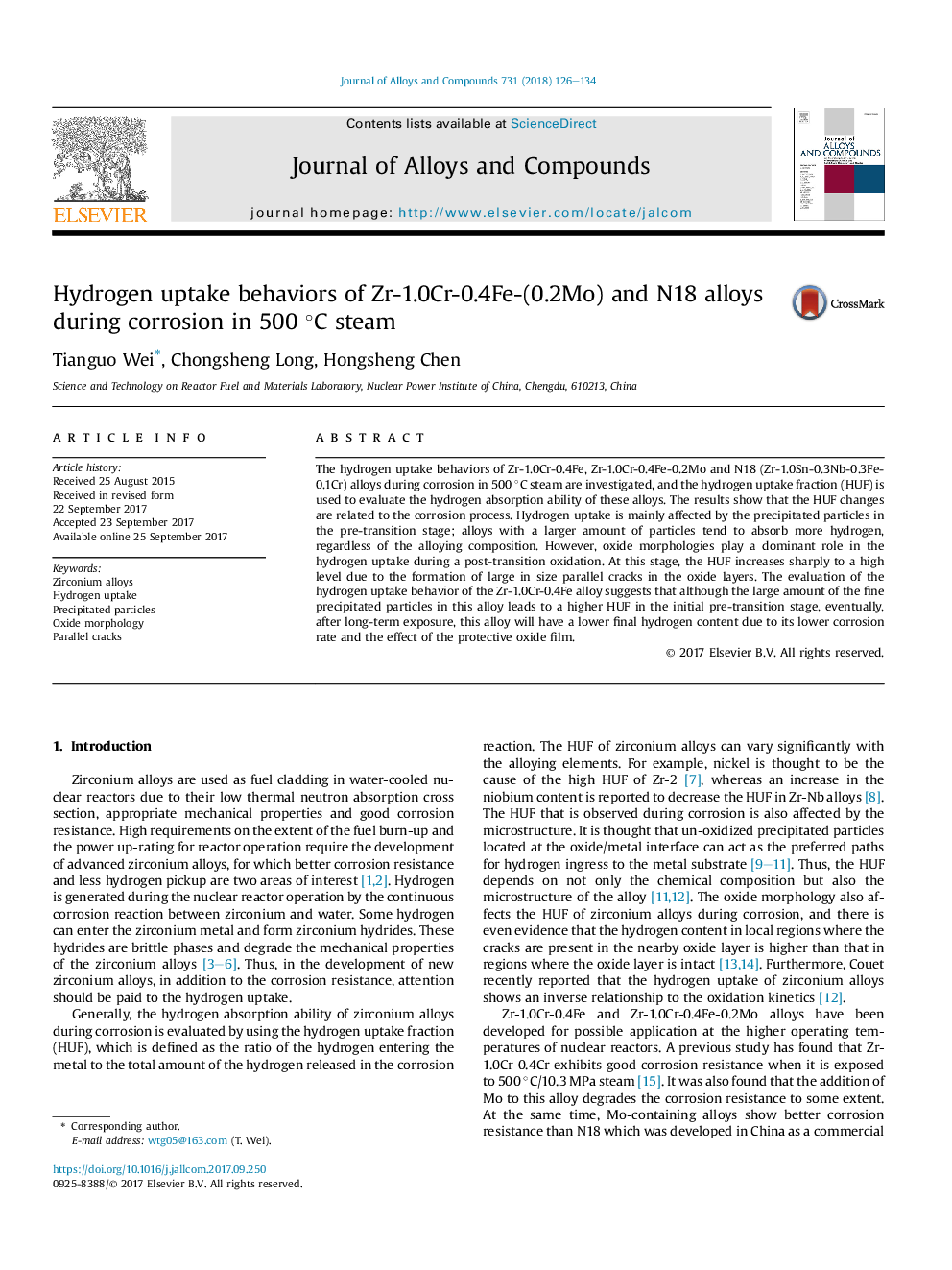| Article ID | Journal | Published Year | Pages | File Type |
|---|---|---|---|---|
| 5458017 | Journal of Alloys and Compounds | 2018 | 9 Pages |
Abstract
The hydrogen uptake behaviors of Zr-1.0Cr-0.4Fe, Zr-1.0Cr-0.4Fe-0.2Mo and N18 (Zr-1.0Sn-0.3Nb-0.3Fe-0.1Cr) alloys during corrosion in 500 °C steam are investigated, and the hydrogen uptake fraction (HUF) is used to evaluate the hydrogen absorption ability of these alloys. The results show that the HUF changes are related to the corrosion process. Hydrogen uptake is mainly affected by the precipitated particles in the pre-transition stage; alloys with a larger amount of particles tend to absorb more hydrogen, regardless of the alloying composition. However, oxide morphologies play a dominant role in the hydrogen uptake during a post-transition oxidation. At this stage, the HUF increases sharply to a high level due to the formation of large in size parallel cracks in the oxide layers. The evaluation of the hydrogen uptake behavior of the Zr-1.0Cr-0.4Fe alloy suggests that although the large amount of the fine precipitated particles in this alloy leads to a higher HUF in the initial pre-transition stage, eventually, after long-term exposure, this alloy will have a lower final hydrogen content due to its lower corrosion rate and the effect of the protective oxide film.
Related Topics
Physical Sciences and Engineering
Materials Science
Metals and Alloys
Authors
Tianguo Wei, Chongsheng Long, Hongsheng Chen,
